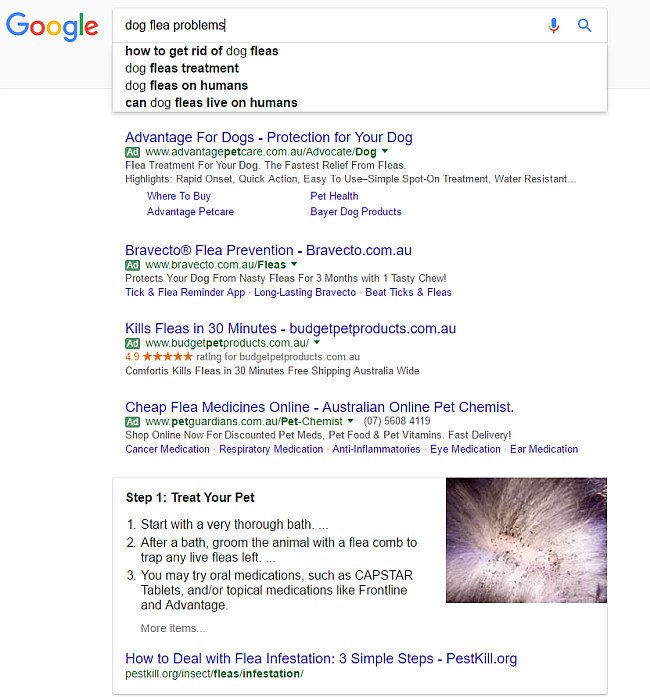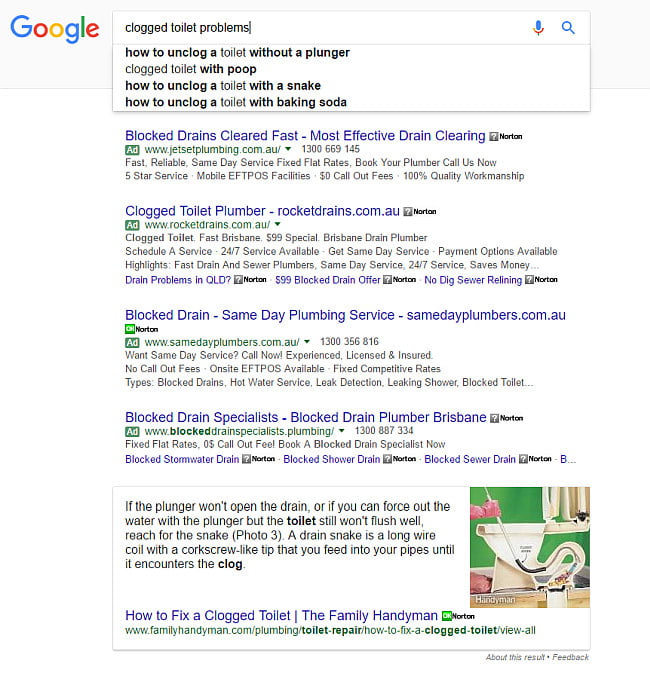Does content marketing work for small trades or service businesses? Here’s a case study for a local tradie. Handy tips on choosing the right blog topic!
Have you ever wondered why small businesses are nagged, pushed and generally lectured about the importance of blogging for their business? Have you wondered if blogging and content marketing makes a difference, or if it is a waste of time for trades or service businesses? Does blogging actually deliver increased traffic to your website and clients to your business?
What if you are interested in blogging, but think your business is a little bit boring and you simply can’t figure out what to write that people would be interested in reading? Sound familiar?
Today we will peek into the hidden world of blogging and content marketing for trades and service businesses, and show you an example from one of our small, suburban trade businesses. This is not a sexy, high-profile business in a fascinating industry. Just a simple, humble trade business with a couple of employees, doing work mainly for mum and dad residential homes in their local Brisbane area.
Trade Business Content Marketing Case Study
A quick disclaimer: I will not name the business or share the URL of the posts in this case study purely because this is a highly competitive trade, with big guns spending thousands each month on SEO and marketing. Our tradie is outperforming most of the big guns through their simple budget-friendly blogging strategy. We don’t want to give away too many of our trade secrets!
Let’s start with the outcomes. Just one simple blog post on our suburban tradies website brings in on average 2500 new visitors to their website each month (3800 in December 2016). That one hero post has delivered over 20 914 new visitors to the local tradie in the past 12 months!
These visitors spend on average 7 minutes reading the blog post which means the post is highly engaging.
Over 87% of all the visitors to this post come from organic Google search. This means people type in their search term and then click through the results. The tradie uses no paid Google Adwords to get traffic. All the Google traffic is free traffic.
Each week, this single post brings in a stack of new clients to the business. People call to book in to get repairs done, and tell the office admin that they reason they called is that the tradie freely shared practical information that helped solve a problem without the hard sell.
Each repair to this item discussed in the blog post brings in at least $750 per callout, making it a highly lucrative service for the business.
You will see from the graph that the visitors have jumped several times during the year. These jumps coincided with us updating the website, refreshing the content, adding in checklists and adding in new questions and answers. Each action saw a corresponding jump in traffic.
This post is a standout hero success, but what about the other blog posts on the site?
In the past 18 months, we have followed similar blog content selection strategies across the site. Some posts generate a few hundred new visitors each month, some a few hundred over the course of a year. The point is each that post delivers new clients who are all looking for solutions to their problems, and then call our tradie.
How do we choose the content to create for our trades or service businesses?
Blogging has shifted in the past 18 months. The content that soars in 2017 is the content that solves one specific problem for a clearly defined audience, and which includes one clear call to action.
Hitting the sweet spot for problem-solving content creation takes research, planning and a bit of know-how. While there is a stack of technical ways we do this for our clients, here’s a quick and dirty strategy that will work for many small businesses.
Problem Solving Blog Post Strategy
1. Define your audience.
Know who you are trying to target with your blog post.
2. Define your solution.
Be clear on what are you trying to get your target audience to do after they have read your post.
3. Find your problem.
This is where the magic of Google comes in. Say that you want to offer dog flea treatment products to pet owners. Head over to Google and type in the words “dog flea problems”.
Google very nicely gives you four suggestions on the most common searches that people type into Google. Each of these suggestions would make brilliant blog posts: “How to get rid of dog fleas” is a post begging to be written!



4. Research the Competition
To crack top rankings and drive traffic to your website, your post needs to be better, more useful and easier to follow than your competitors.
Check out a stack of the current listings that are returned when you type in your proposed blog title, and use these posts to inspire your headings, content, images and depth. Never steal content! Always create unique content, or this strategy will not work.
5. Launch. Monitor. Adjust.
Writing and launching your post is a brilliant start but is not enough. You need to amplify its reach to make sure that it delivers the outcomes you are looking for.
Blog posts are not meant to be static. There are many different strategies on how to help your content move across the net, which is a topic that we will tackle in a future blog post.
The thing you need to remember is to keep an eye on your blog posts, and when you find one that is gaining traction, extend it with even more useful content and images, and make it even more fantastic than before. Take what is working and then crank up the volume on your post!
Advanced Content Marketing Strategies
Hero posts are brilliant to use as a base for your other content marketing strategies. When something has proven, it resonates with your audience, go all out to extend it to maximise the reach even further!
- Rework the content and use it in guest posts on other sites.
- Offer a content upgrade (checklists, downloads, PDF versions) on the post to grow your mailing list.
- Convert the content to video or a SlideShare presentation.
- Drive traffic to it using dark Facebook posts as a way of having the Facebook pixel fire for the client, so you can remarket directly to them.
Conclusion
Blogging and content marketing is a brilliant strategy for small trades and service businesses. All you need to do is find a problem that your clients need solved and give them a solution. Creating hero posts for your blog will make a massive difference to your business.






